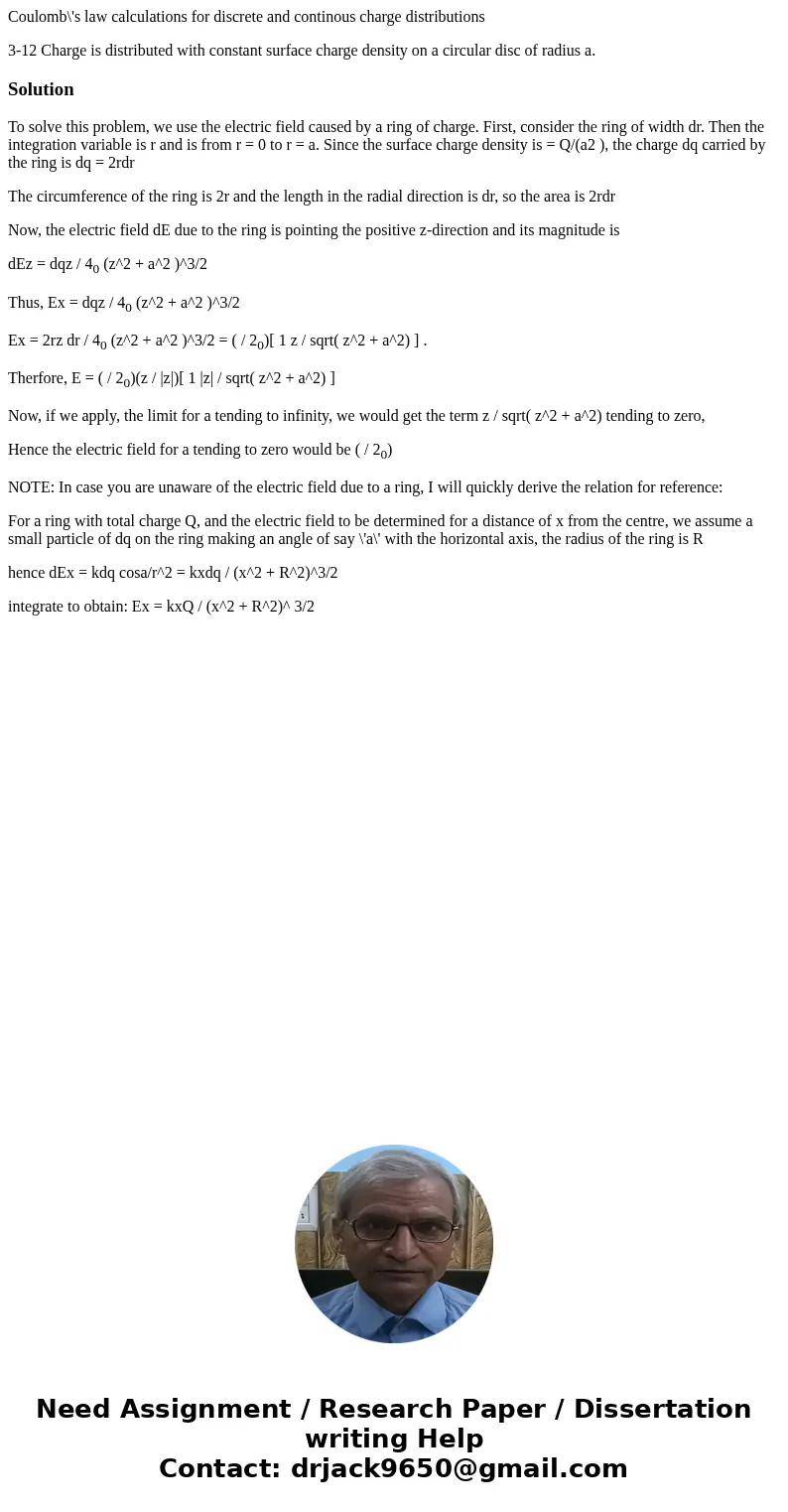Coulombs law calculations for discrete and continous charge
Coulomb\'s law calculations for discrete and continous charge distributions
3-12 Charge is distributed with constant surface charge density on a circular disc of radius a.Solution
To solve this problem, we use the electric field caused by a ring of charge. First, consider the ring of width dr. Then the integration variable is r and is from r = 0 to r = a. Since the surface charge density is = Q/(a2 ), the charge dq carried by the ring is dq = 2rdr
The circumference of the ring is 2r and the length in the radial direction is dr, so the area is 2rdr
Now, the electric field dE due to the ring is pointing the positive z-direction and its magnitude is
dEz = dqz / 40 (z^2 + a^2 )^3/2
Thus, Ex = dqz / 40 (z^2 + a^2 )^3/2
Ex = 2rz dr / 40 (z^2 + a^2 )^3/2 = ( / 20)[ 1 z / sqrt( z^2 + a^2) ] .
Therfore, E = ( / 20)(z / |z|)[ 1 |z| / sqrt( z^2 + a^2) ]
Now, if we apply, the limit for a tending to infinity, we would get the term z / sqrt( z^2 + a^2) tending to zero,
Hence the electric field for a tending to zero would be ( / 20)
NOTE: In case you are unaware of the electric field due to a ring, I will quickly derive the relation for reference:
For a ring with total charge Q, and the electric field to be determined for a distance of x from the centre, we assume a small particle of dq on the ring making an angle of say \'a\' with the horizontal axis, the radius of the ring is R
hence dEx = kdq cosa/r^2 = kxdq / (x^2 + R^2)^3/2
integrate to obtain: Ex = kxQ / (x^2 + R^2)^ 3/2

 Homework Sourse
Homework Sourse